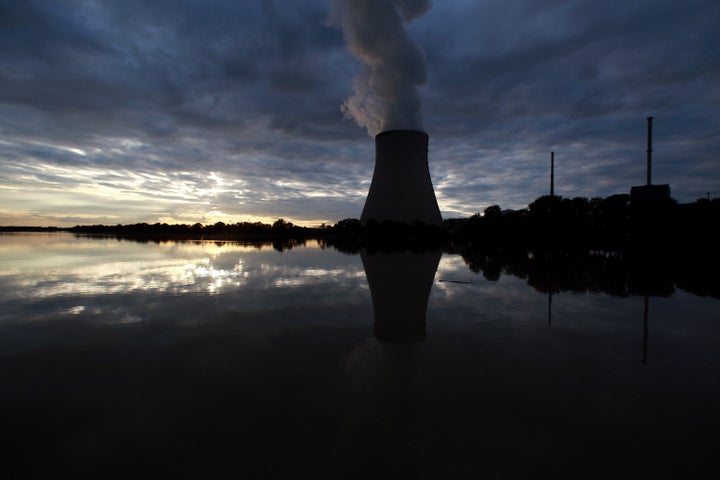
For many Americans, the words "nuclear power" still conjure up images of Three Mile Island and Chernobyl, fears of meltdowns or radioactive leaks. Those reactor failures helped drive the U.S. nuclear industry into dormancy in the late 1970s.
But there's an increasingly urgent need in this country for a clean, carbon-free energy source. And to nuclear advocates, the answer lies not in burning dirty coal but with old-fashioned atomic fission. America was the first to harness the awesome power of atoms for peaceful purposes (and not so peaceful purposes.) As for safety concerns? We toured a research reactor at the Massachusetts Institute of Technology, and director Dr. David Moncton told us the significance of Three Mile Island has been misunderstood. "What happened there was the nuclear equivalent of landing on the Hudson," Moncton said. An accident all right, but one that was brought under control before anyone was harmed. As for the deadly explosion at Chernobyl, Moncton told us our reactors are designed with a completely different technology that would make such an accident here impossible.
But even nuclear supporters concede that nuclear power remains hobbled by its price tag and the unanswered question of what to do with all that leftover radioactive waste that nuclear power generates. So what if there was a way to build nuclear power plants that were smaller, more affordable, and that even solved -- or at least greatly reduced -- the waste issue? I recently met entrepreneurs and scientists with radical ideas to do just that.
Dr. Eric Loewen oversees advanced reactor designs at GE-Hitachi, in Wilmington, NC. He's peddling a new nuclear reactor called the PRISM that actually runs on the waste generated by current reactors. The technology exists to recycle spent fuel, he says, it's the political will that's lacking.
The PRISM has a rich pedigree that dates back to the early 1980s, when President Ronald Reagan launched a little-known research project in the Idaho desert. We traveled out to the Arco Desert and toured a moth-balled reactor with retired scientist Dr. Charles Till, where Till spent ten years and hundreds of millions of taxpayer dollars to prove that recycling nuclear fuel could work. Till told us the government pulled the plug on the project before it was 100% proven. It was a mistake, according to Till and Loewen. "They were completely wrong," Loewen told me.
While Loewen wants to recycle nuclear fuel, there's a brother-sister team that want to make nuclear more affordable, by shrinking it. John "Grizz" Deal and his sister Deborah Blackwell have a "hot tub" sized reactor, one they envision can be factory-produced and then transported by truck or rail wherever needed. Each reactor provides enough electricity for 20,000 homes. Perfect, they say for the developing world, small towns, or even military installations.
But these visionaries are getting ahead of themselves, according to Dr. Ernest Moniz, a renowned physics professor at MIT and a member of President Obama's Council of Advisors on Science and Technology. "I feel like I'm a technology Luddite or something in saying this," Moniz told me, "For the next ten, twenty years, if we're going to build nuclear power, it's going to be fundamentally based around what you see and the so-called generation III+ reactors." In other words, more traditional, large nuclear power plants, financed with government help.
Whether the government is on the right path is a point of contention, but on one point, everyone I interviewed agrees. Nuclear power is the solution, they say, and it's time to get going. Their next challenge is winning over skeptics, who thought the horrors of Chernobyl killed the nuclear option a long time ago.
Dan Rather Reports airs Tuesdays on HDNet at 8 p.m. and 11 p.m. ET. This episode is also available on iTunes.